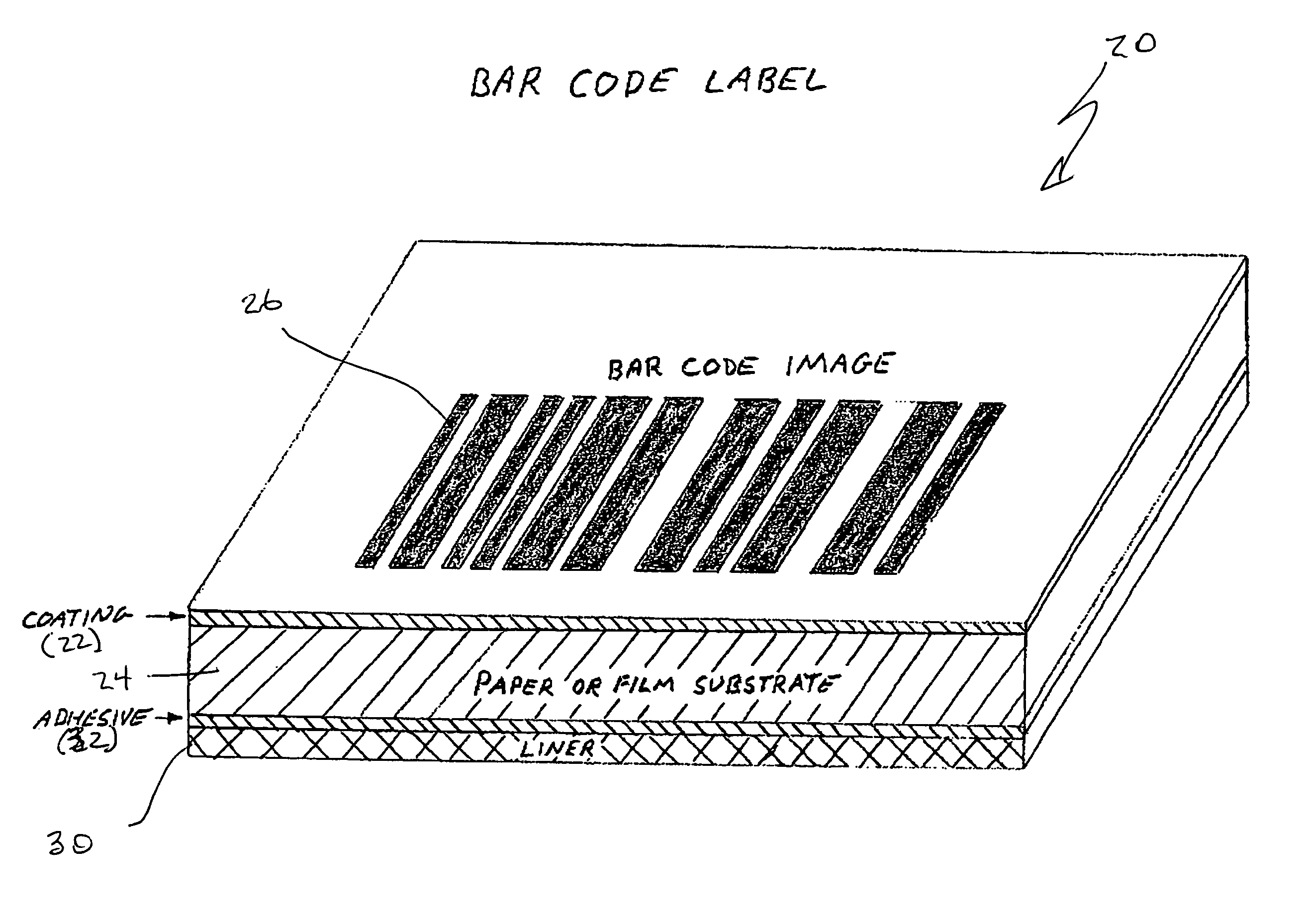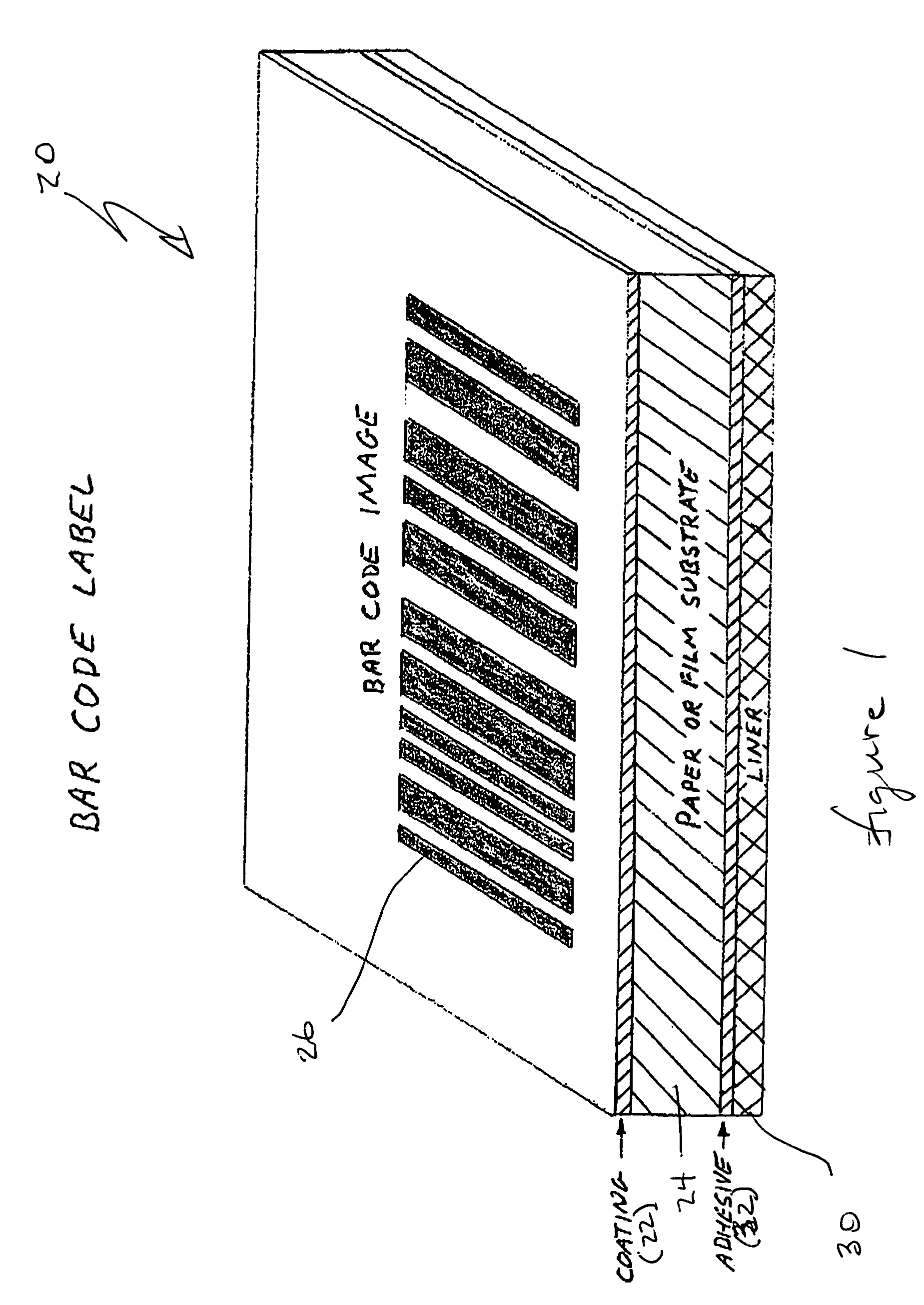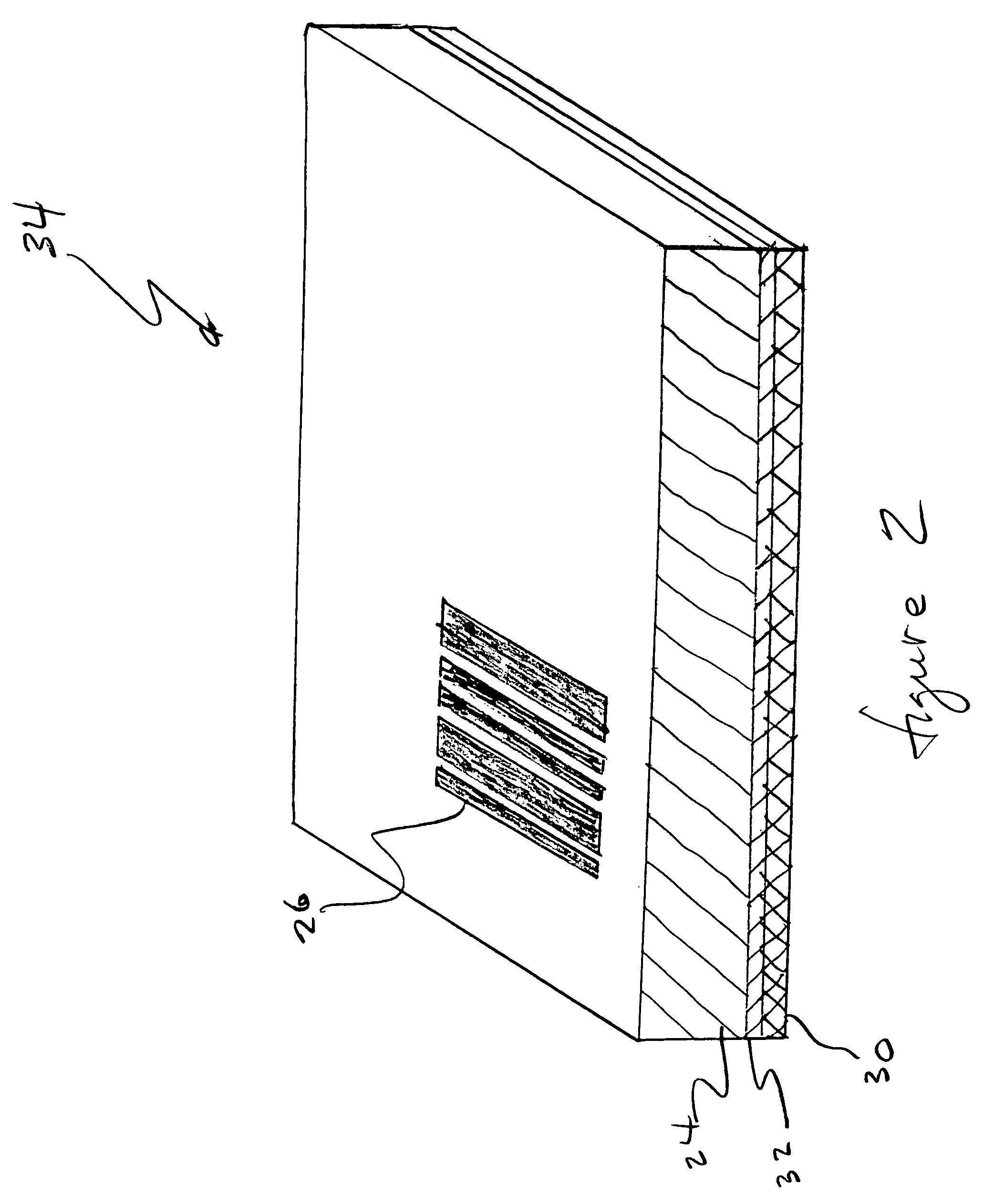Method for making and a business form having printed bar codes on a coated substrate
a technology of coating substrate and business form, which is applied in the direction of sensing record carriers, instruments, electromagnetic radiation sensing, etc., can solve the problems of care givers having difficulty in reading bar coded information from a patient's wristband or otherwise at night, introducing the possibility of an error in acquiring or scanning data, and lack of proper lighting, so as to improve the scannability of bar codes and improve the scannability. , the effect of improving the scannability
- Summary
- Abstract
- Description
- Claims
- Application Information
AI Technical Summary
Benefits of technology
Problems solved by technology
Method used
Image
Examples
Embodiment Construction
[0017]As shown in the drawings, the present invention 20 involves applying a coating of fluorescent ink 22 to a carrier or face stock layer 24 of a business form and then printing a bar code 26 thereon. The face stock layer could be part of a self laminating wristband as may be die cut into the face stock layer 24 and an underlying laminate layer 30 adhered thereto with a layer of patterned adhesive 32 such that after separation of the wristband a portion of the laminate layer 30 may be folded over an imaging portion of the face stock layer 24 to protect the imaging portion. Examples of such wristband forms as well as exemplary labels may be found in any of several previously issued patents owned by the assignee hereof, as noted above. The bar code 26 is preferably printed on the face stock portion 24 so that it is protected by the overlying portion of the laminate layer 30. This wristband construction is exemplary of several such wristbands as shown in the co-inventor's prior paten...
PUM
 Login to View More
Login to View More Abstract
Description
Claims
Application Information
 Login to View More
Login to View More - R&D
- Intellectual Property
- Life Sciences
- Materials
- Tech Scout
- Unparalleled Data Quality
- Higher Quality Content
- 60% Fewer Hallucinations
Browse by: Latest US Patents, China's latest patents, Technical Efficacy Thesaurus, Application Domain, Technology Topic, Popular Technical Reports.
© 2025 PatSnap. All rights reserved.Legal|Privacy policy|Modern Slavery Act Transparency Statement|Sitemap|About US| Contact US: help@patsnap.com



